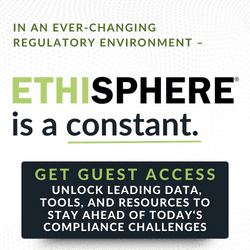The turmoil in the Middle East has demonstrated that once governments undertake confiscatory or discriminatory actions, mobs take to the streets or civil war breaks out, crisis management and damage control options available to a company are limited. Country risk – or sovereign or political risk, as it is sometimes called – comprises the various risks of investing in a foreign country that can lead to either investment impairments or reductions in investment returns (ROI). The primary objective of managing country risk is to protect company investments and sustain investment returns.
Because events in high-risk countries can occur with little warning, companies should analyze regularly the portfolio of countries in which they operate. An effective country risk assessment requires an evaluation of such factors as political stability, financial stability, economic outlook and exposure to corruption. Unfortunately, this assessment often lacks precision and is rarely integrated into a proactive decision-making process.
Some companies rely on research firms that can provide indices offering an indication of relative risk. However, this data often lacks guidance or suggestions as to exactly what decision makers should do. One reason is that extreme high-impact, low-likelihood events are simply unpredictable.
The following are some items for multinationals to consider when faced with high-risk situations:
Empower local management – When risky situations arise, vest local management with the responsibility to do what they have to do and take any and all necessary steps to protect the safety of employees and safeguard company assets. On-the-ground management understands better than anyone what’s happening, and they’re privy to the cultural nuances that can make or break the successful management of risks surrounding an organization’s personnel, operations and assets – particularly in a crisis. Because companies are morally obligated to do what they can to protect the health and safety of local employees and expatriates in a foreign country, local management must ensure that employee safety trumps all other aspects of the business.
When high risk of confiscation or discrimination emerges – When the company is exposed to confiscation (e.g., nationalization of the business or expropriation of assets) that can lead to significant investment impairments or to some form of taxation, price controls, exchange controls or other discrimination directed to the company that can reduce ROI significantly, these are actions that can be taken to reduce the exposure:
- Repatriate cash: If exchange controls and currency conditions allow, repatriate as much cash as possible – after considering the requirements for sustaining local operations – to reduce the risk of losses due to confiscation. Simply put, if there’s any concern about whether a sovereign could target your company’s money, then it’s best to get the cash home as quickly as possible.
- Manage down investment: Treat the operation as though it’s a “cash cow” until conditions stabilize and management can better gauge the company’s ongoing interests in the country. Avoid any additional capital investments while, as noted above, repatriating whatever cash you can. Stop replenishing inventory from abroad and look for ways to finance payroll, maintenance and other operational functions through local cash flow.
- Divest/disperse/exit: Initiating an exit strategy by divesting assets in the cool of the day is always an option, if there is a willing buyer. Obviously, it is not likely to be a viable option when violence, civil war and/or anarchy break out. Moving tangible and non-tangible (e.g., data files, intellectual property) assets out of harm’s way may be a good strategy to consider, if feasible. For example, if the company has a fleet of vehicles or heavy equipment close to known “hot spots,” it may be best to move them to other locations away from the fighting and violence. While distributing valuable physical assets elsewhere (beyond where the heavy action is expected to be) is often an option, it also can create exposure to violence and looting if the present regime pulls in its police and military forces to protect its interests.
- Share the risk: While not a guarantee, entering into joint ventures with local/foreign partners is a way to reduce exposure to confiscation risk because the presence of nationals can take a multinational under the radar. If cost-effective, political risk insurance is another option covering the risks of confiscation, political violence, insurrection, civil unrest and discrimination, among other things.
Other options may also be available, including passive options like lobbying and maintaining good relationships with local unions.
Consider the trends when assessing risk – Assess risk of similar exposure in other countries in which you do business by understanding the driving forces of change and take proactive steps to manage that exposure. For example, watch closely countries besieged with pervasive entrenched corruption or facing a potential water supply crisis, food shortage crisis and/or unsustainable population growth. The complexities and interconnections that underpin these global risks can mobilize the masses. In addition, understand a country’s balance of payments, likely macroeconomic performance and fiscal policy. Consider alternative potential scenarios affecting these factors, assessing their impact, likelihood and velocity, as well as the company’s response readiness.
Conduct a post-mortem – When an adverse event arises in a particular country, review the assumptions your company had previously formed concerning that country from an economic, political and financial system risk standpoint. If a consultant was used, what were the results of his or her research and what advice emerged from that research? Did management see the event coming? If not, why not? If management saw it coming, did the organization take steps to prepare? Could the company have done anything differently? A post-mortem provides management an opportunity to review what happened and determine “lessons learned” that they can apply to other countries in which they operate.
——————————————————————————————–
Multinationals can expect continued challenges in the future from political instability. That is why, when evaluating whether to invest or sustain operations in a new country or region, the risks specific to the country or region should be considered carefully in the decision-making process.



 Jim DeLoach, a founding
Jim DeLoach, a founding 








